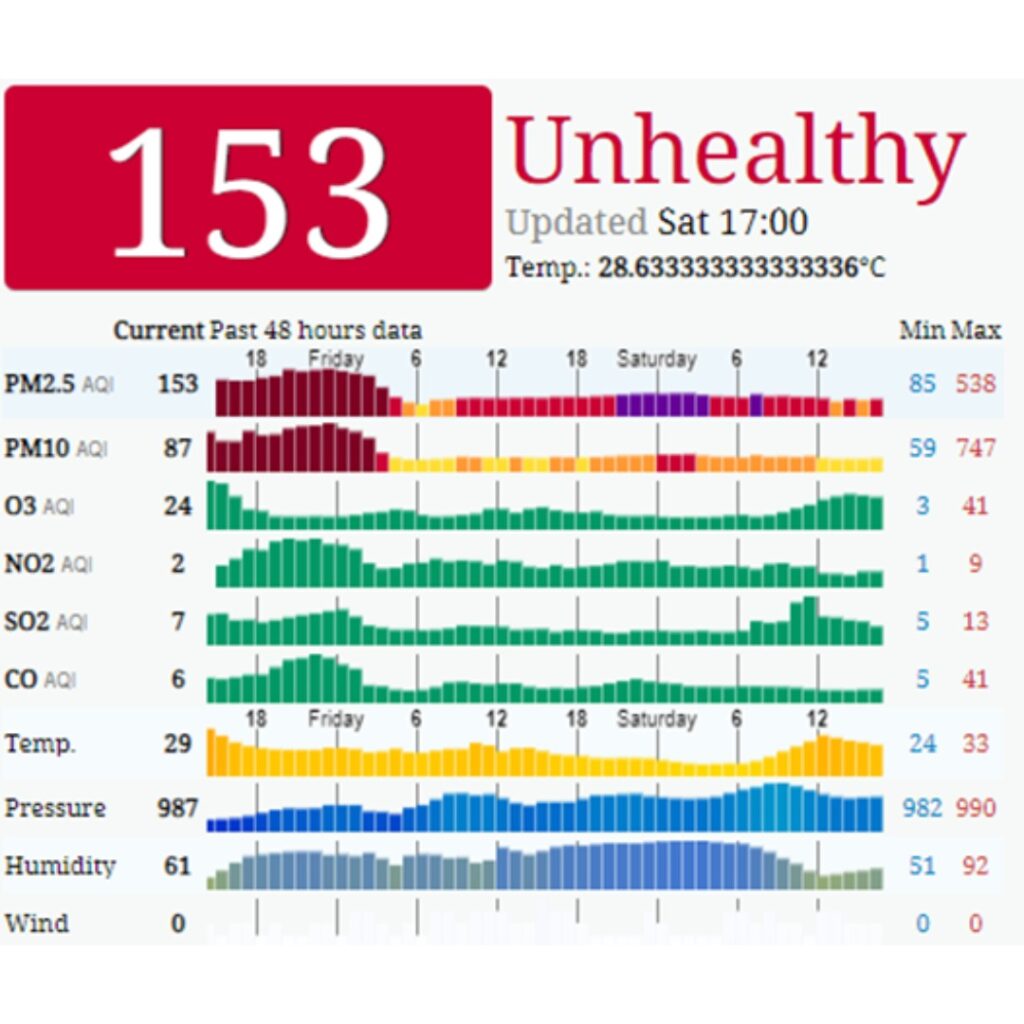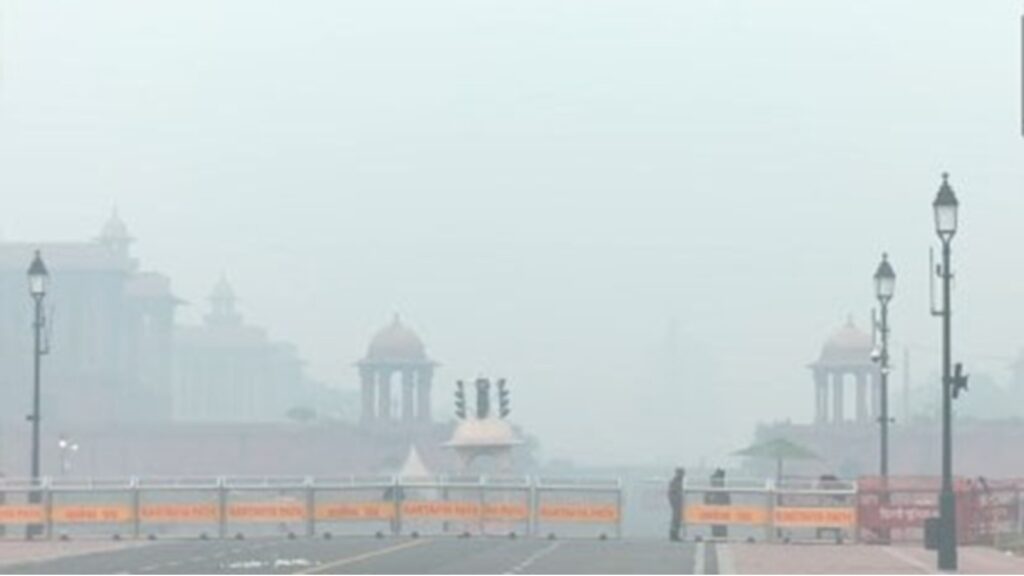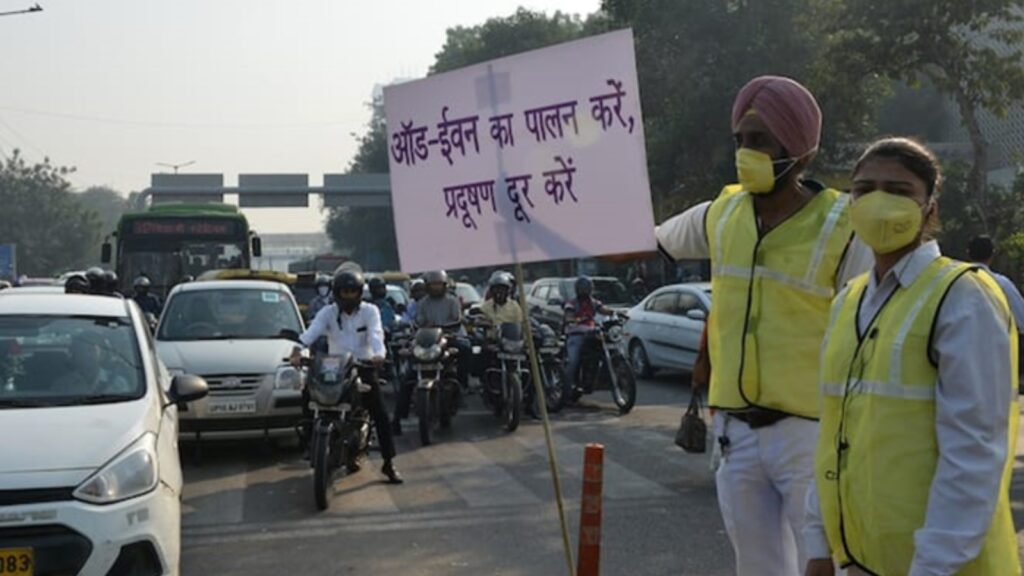The nation’s capital, Delhi, is plagued by an ongoing problem: air pollution. Every year when winter approaches, stubble burning in the nearby states of Punjab and Haryana causes the air quality index to spike to dangerous levels. In recent times, there has been a glimmer of hope, with innovative solutions emerging to combat this environmental menace.
Real time AQI Checker – https://www.aqi.in/
As per the 2023 Jan Record: Delhi’s air quality index (AQI) was in a severe category as the concentration of PM 2.5 was spiking to emergency levels.
In Delhi PM 2.5 was nearly 100 times the safe limit set by the World Health Organisation and long-term exposure to it can cause severe respiratory ailments, or even lead to fatal lung cancer.
(Source:https://www.outlookindia.com/national/explainer-everything-you-need-to-know-about-air-pollution-in-delhi-news-251658).
Current Pollution level in Delhi
According to a recent report by IQAIR, Delhi is grappling with a critical air quality situation, with PM2.5 identified as the primary air pollutant. The Air Quality Index (AQI) for the city is registered at 158, categorising it as unhealthy.

(Source – https://aqicn.org/city/delhi)
This emphasises the urgent need for comprehensive measures to address the alarming levels of particulate matter, underlining the severity of the air pollution crisis in the capital.
The Stubble Burning Predicament
An agricultural custom, stubble burning has become a significant source of Delhi’s environmental problems. This technique is used by farmers to quickly prepare their fields for the following crop, but it releases a hazardous mixture of chemicals into the atmosphere. The repercussions are severe, worsening respiratory conditions and impacting millions of people’s health.

Government Initiatives
Acknowledging the severity of the problem, the government has taken significant steps to curb stubble burning and alleviate Delhi’s pollution crisis. Ambala’s District Collector, IAS Vikram Yadav, stands as a beacon of change, successfully raising awareness and implementing subsidies to encourage farmers to convert stubble into fertilizers. This initiative alone led to an 80 percent reduction in stubble burning cases.
Government Actions and Future Steps
While the government has implemented various measures to tackle air pollution, including the promotion of electric vehicles, stringent emission norms, and subsidies for pollution control technologies, there is still room for improvement.
Strict Enforcement of Regulations
To guarantee that industries and individuals comply with pollution control measures, it can be beneficial to enforce current legislation more strictly and impose severe penalties for non-compliance.
Promotion of Sustainable Agriculture
Increasing the utilisation of cutting-edge technologies such as the Pica decomposer and offering incentives for sustainable farming ways might help decrease occurrences of stubble burning and encourage ecologically friendly farming techniques.

Investment in Public Transportation
Enhancing and expanding public transportation infrastructure can incentivize people to opt for eco-friendly commuting options, thereby reducing the vehicular pollution burden on the city.
Research and Development
Continued investment in research and development of green technologies, coupled with support for startups working on sustainable solutions, can pave the way for long-term improvements in air quality.
PusaDecomposer–A Revolutionary Solution
Taking a giant leap forward, the Indian Council of Agricultural Research (ICAR) introduced the Pusa decomposer, a bio-decomposer that has garnered attention and adoption in states like Punjab, Haryana, Uttar Pradesh, and Delhi.
Since 2020, the Delhi government has been using Pusa bio-decomposer, a microbial solution that decomposes paddy residue in 15-20 days, to prevent stubble burning in the capital.
Farm fires are a major reason behind a spike in air pollution in Delhi-NCR in October-November. The government sprayed the bio-decomposer over 4,400 acres of paddy fields last year, Rai said, adding that 5,000 acres of land will be covered this season.
(Source: https://www.business-standard.com/industry/agriculture/stubble-burning-delhi-govt-launches-drive-to-spray-bio-decomposer-123101300432_1.html)
This innovative solution transforms crop residue into organic fertilizer, eliminating the need for burning and simultaneously promoting soil health. In the current year alone, the Pica decomposer has been used on a staggering 978,713 acres, managing approximately 2.4 million tonnes of straw.
Protecting the Vulnerable: Children and Pollution
Children, with their developing respiratory systems, are particularly vulnerable to the adverse effects of air pollution. The hazardous air quality in Delhi poses serious threats to their health, including respiratory disorders, developmental issues, and a compromised immune system. Safeguarding the well-being of our children requires a multi-pronged approach.
Education and Awareness
It is crucial to educate parents, teachers, and children themselves about the dangers of pollution and the steps they can take to minimize exposure. Awareness campaigns in schools, featuring engaging and age-appropriate content, can instill a sense of responsibility from a young age.
Use of Masks and Indoor Activities
Encouraging the use of pollution masks when outdoor air quality is poor and promoting indoor activities during peak pollution seasons can significantly reduce children’s exposure to harmful pollutants.
Green Spaces and Tree Plantation
Increasing green spaces and planting more trees in and around schools and residential areas can act as a natural barrier, filtering out pollutants and providing cleaner air for children to breathe.
Delhi’s battle against air pollution is multifaceted and requires a collaborative effort from citizens, industries, and the government. The strides made in curbing stubble burning, exemplified by initiatives like the Pica decomposer, offer hope for a cleaner, healthier future. By prioritizing the well-being of children, enforcing existing regulations, and investing in sustainable practices, Delhi can pave the way for a sustainable and breathable tomorrow.
Delhi winters and the pollution control problems faced by the citizens
Leave a Reply